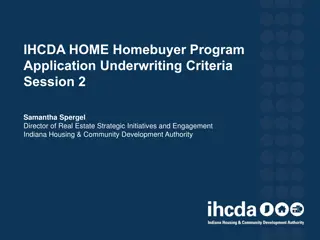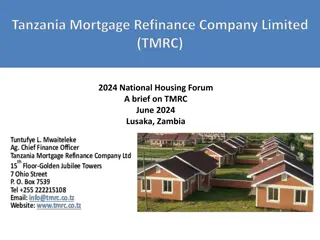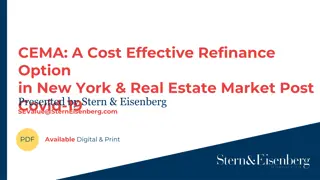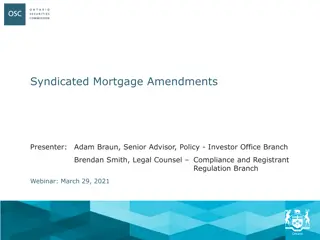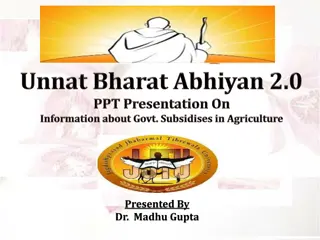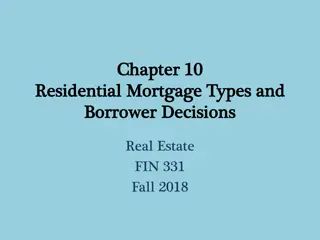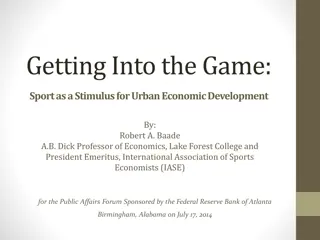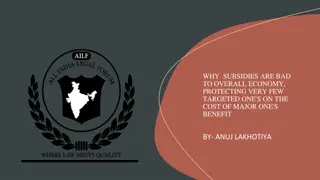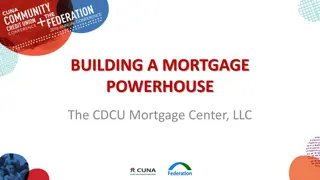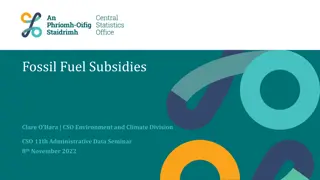Refinancing Cross-Subsidies in the UK Mortgage Market Analysis
In-depth analysis of price dispersion and cross-subsidies in the UK mortgage market, exploring winners and losers, benchmark models, measurement of cross-subsidies through data analysis, and the impact of contract structures. The study delves into the micro-foundations of adjustment costs and the role of competition in shaping the current mortgage structure in the UK.
Download Presentation

Please find below an Image/Link to download the presentation.
The content on the website is provided AS IS for your information and personal use only. It may not be sold, licensed, or shared on other websites without obtaining consent from the author.If you encounter any issues during the download, it is possible that the publisher has removed the file from their server.
You are allowed to download the files provided on this website for personal or commercial use, subject to the condition that they are used lawfully. All files are the property of their respective owners.
The content on the website is provided AS IS for your information and personal use only. It may not be sold, licensed, or shared on other websites without obtaining consent from the author.
E N D
Presentation Transcript
Refinancing Cross-Subsidies in the UK Mortgage Market Gregor Matvos Kellogg School of Management
Price Dispersion Consumers pay different prices for the same financial product Agarwal et al 2020; Allen et al 2014a, b, 2019; Argyle et al 2020; Bhutta et al 2019, Gurun et al 2016; Stango & Zinman 2016, Woodward and Hall 2012 Common in mortgages at origination (and credit cards, auto loans, insurance ) This paper: Refinancing as a source of price dispersion
Cross-subsidies: Winners & Losers Price dispersion + equal mc across consumers dispersion in rents across consumers Losers: consumers who pay high prices Winners: Consumers who pay low prices Firms who earn large mark-up Benchmark intuition Perfect competition zero profits winners are consumers who pay low prices Prices for winners below AC or MC Model: fixed revenue counterfactual (is this perfect competition?)
This Paper: Measurement of Cross-Subsidies Data: stock vs. flow Pre-payment, re-fi, cash-out Benchmark model: Heterogeneity in preferences linked to housing choices Fixed costs of re-fi Perfect competition Why model: Help quantify cross-subsidies Evaluate cross-subsidies under alternative scenarios Need to know Winner / Loser breakpoint Extensive margin who gets a loan Intensive margin loan size
Do we care? Stigler (1961) The Economics of Information Price dispersion is a manifestation and, indeed, it is the measure of ignorance in the market Financial innovation: optimal mortgage design Risk-sharing Screening / monitoring Government policy Types of products ARM, FRM; limitations on LTV, DTI, Maturity Price regulation Who obtains products (CRA) Advertising & Disclosure Monetary policy
Questions Why this contract structure? Micro-foundations of adjustment costs The role of competition
Why the current mortgage structure UK fixed rate mortgage design Low teaser + high reset rate Note: heterogeneity in reset period & prices Candidate explanations: Market outcome Government intervention What are the frictions?
What is the source of inaction? Model: fixed cost of adjustment Borrowers have foresight classic adjustment costs model What are the frictions that lead to rate resets + heterogeneity in adjustment? Counterfactual mortgage choices measurement of cost Policy Is cross-subsidization a problem? Is there a role for financial innovation? Is there a role for the government?
Frictions Shrouded attributes (Gabaix & Laibson 2001 Lender optimal design to extract rents from uninformed (foresight) Private financial innovation may be counterproductive Gvmt intervention: Libertarian paternalism Foresight vs. na ve? Asymmetric information Bad types have a difficult time refinancing, stick with current mortgage Repricing of risk Optimal contract design? Room for gvmt inefficient signaling force pooling? Time varying default risk Costly to monitor, so have repricing built in One sided commitment, risk sharing,
Nave vs. perfect foresight Foresight of adjustment cost k Mechanism in counterfactual mortgage choice Size affects re-fi choice & cost of re-fi backward induction from re-fi cost Alternative: na ve hyperbolic discounting No foresight of k Idea: bad at re-fi bad at forecasting Counterfactual mortgage choice: k does not play a role in ex ante mortgage choice Implications for policy Financial innovation difficult na ve about better alternative products? Room for gvmt intervention: information, mandatory uniform pricing Exploit cross-sectional price dispersion at origination or re-fi Do late refi makes worse choices given the mortgagte price distribution
Asymmetric information & re-fi choice Asymmetric information Late (no) refi bad type ex post Counterfactual: Information rent as a source of cross-subsidy Sorting (adverse selection?) Extensive margin (market breakdown?) Exploit loan performance data Loan performance / house price etc. on late re-fi
Role of competition Perfect competition winners and losers are households Interventions generally change competition Private (innovation) rents accrue to the innovator Government intervention restricting entry, pricing generally change IO In search markets, helping unsophisticated consumers can also help sophisticated consumers (Agarwal et al 2020) Rents flow from firms to consumers Interest rate pass-through informative on competition
Conclusion Important topic Benchmark model: perfect competition + homogenous costs Different preferences linked to household choices Fixed cost Measures Is it possible to link the model to underlying frictions Product structure Re-fi decisions Cross-section of prices Loan performance




